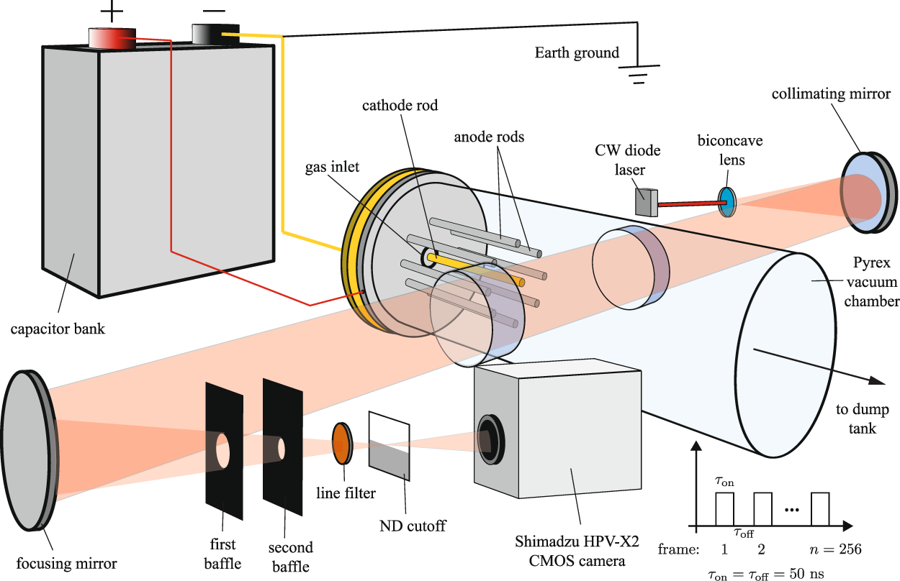by Thomas C. Underwood, Keith T. K. Loebner, Victor A. Miller & Mark A. Cappelli
Scientific Reports volume 9, Article number: 2588 (2019)
Instabilities play a prominent role in determining the inherent structure and properties of magnetized plasma jets spanning both laboratory and astrophysical settings. The manner in which prominent unstable modes dynamically evolve remains key to understanding plasma behavior and control. In astrophysical phenomena, self-similar jets are observed to propagate over vast distances while avoiding breakup caused by unstable mode growth. However, the production of stable dense plasma jets in the laboratory has been limited by the onset of unstable modes that restrict jet lifetime, collimation, and scalability. In this work, we visualize the formation of stable laboratory-generated, dense, super-magnetosonic plasma jets in real time, and we identify an underlying mechanism that contributes to this behavior. The current-driven plasma jets generated in our experiments form a flowing Z-pinch, which is generally unstable to the m = 1 kink instability. Our results indicate that a stable dense plasma jet can be maintained for timescales over which a steady pinch current can be sustained, even at levels which would otherwise lead to rapid unstable mode growth and resultant pinch disassembly.
